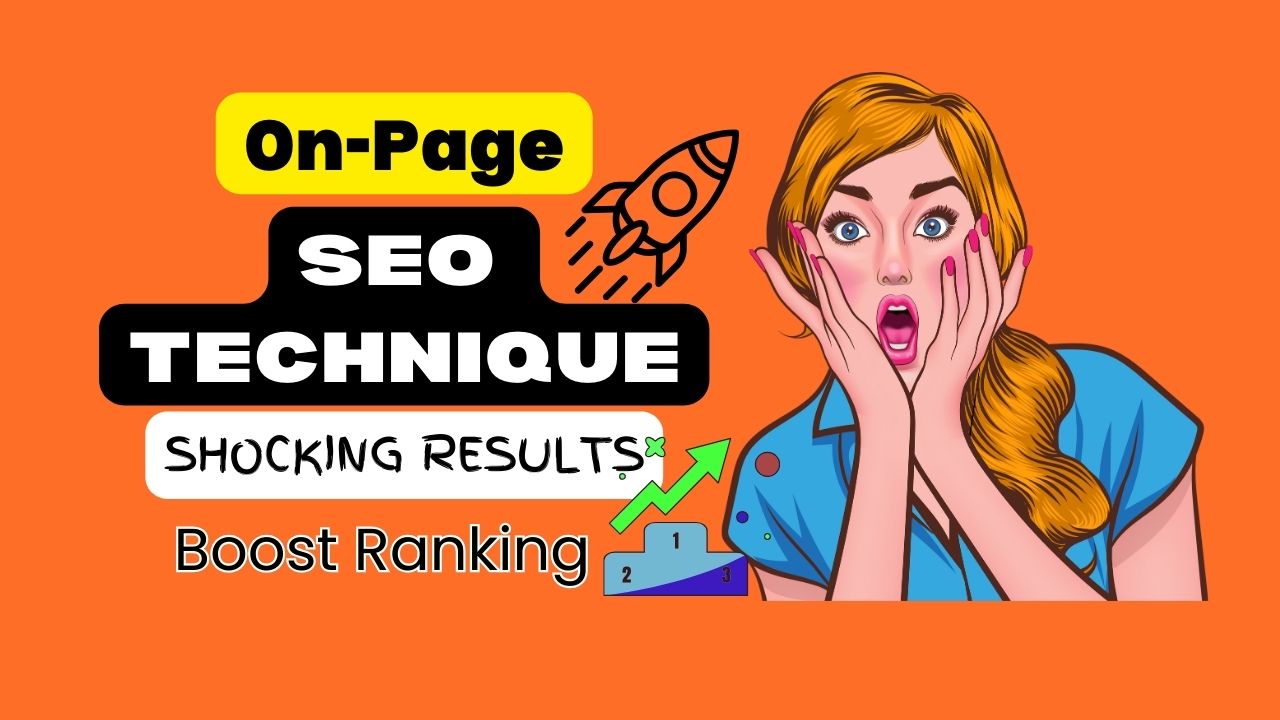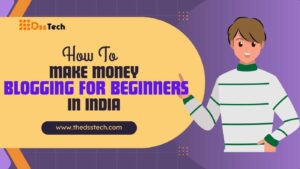As a Blogger, you should know that the essential part of Blogging is On-Page SEO Techniques. Want to make your website shine in search results? On-page SEO is your secret weapon! You can boost your rankings and attract more visitors by tweaking elements on your pages.
In this guide, we’ll dive into simple, yet powerful techniques to optimize your content, structure, and user experience. Whether you’re a beginner or a seasoned pro, these tips will help you enhance your site’s visibility and performance. Want to make your website even better? Let’s get started!

Keyword Optimization:
When it comes to keyword optimization, it’s not just about sprinkling keywords everywhere. Think of keywords like signposts that guide users to your content. They should seamlessly blend into your content, appearing naturally within headings, sentences, and even image descriptions.
But here’s the twist: instead of obsessing over exact matches, focus on user intent. What are people really searching for? Crafting content that directly addresses those needs will not only satisfy users but also help search engines understand your page’s relevance.

Quality Content:
Quality content isn’t just about being grammatically correct or nicely formatted. It’s about giving your audience something useful. Think of your content as a solution to someone’s problem or an answer to their question. By addressing common pain points, sharing unique insights, or refreshingly presenting information, you can truly stand out.
Remember, it’s not always about being the loudest voice in the room; sometimes, being the most helpful one speaks volumes.

Optimized Meta Tags:
Think of meta tags as your website’s way of saying hello to the world. They tell search engines and people what your page is about. While it’s important to include relevant keywords, don’t forget about the human element. Craft meta titles that are not only keyword-rich but also compelling and click-worthy. Your meta description should be like a movie trailer—just enough to spark curiosity and make people want to learn more.

URL Structure:
URLs are the digital addresses of your web pages. A good URL structure not only helps search engines understand your content but also makes it easier for users to navigate. Keep your URLs concise and descriptive, like road signs that clearly point to what’s ahead. Avoid long strings of numbers or random characters; instead, use keywords to give users a sneak peek into what they can expect on the page.

Mobile-Friendliness:
In today’s mobile-centric world, being mobile-friendly is non-negotiable. Your website should adapt seamlessly to different screen sizes and devices, providing users with a consistent experience no matter how they access your content. But here’s the kicker: mobile-friendliness isn’t just about responsive design; it’s also about speed.
Mobile users are often on the go and impatient. Optimizing your site for lightning-fast load times can make all the difference between a bounce and a conversion.

Internal Linking:
Internal linking is like creating a web of connections within your own website. It’s not just about guiding users to other pages but also about distributing SEO juice throughout your site. Think of it as building pathways for both users and search engine crawlers to explore your content. But here’s the secret sauce: instead of just linking for the sake of it, focus on relevance.
Each internal link should serve a purpose, whether it’s directing users to related content or highlighting important pages. By strategically interlinking your content, you can improve navigation, increase page authority, and enhance the overall user experience.

Image Optimization:
Images don’t just make your website look pretty; they also play a crucial role in SEO. But here’s the thing: search engines can’t “see” images the way humans do. That’s where optimization comes in. Start by choosing the right file format and size to ensure fast loading times. Then, don’t forget to give your images descriptive filenames and alt text.
Think of alt text as a voiceover for your images, providing context for visually impaired users and helping search engines understand what the image is about. By optimizing your images, you not only improve accessibility but also give your SEO a boost.

Schema Markup:
Schema markup is like adding extra layers of information to your content, making it more meaningful to search engines. But here’s the kicker: while most websites focus on basic schema types like reviews and ratings, there’s a whole world of possibilities out there.
From FAQ schema to job postings to recipes, there’s a schema markup for almost every type of content. By leveraging advanced schema types that are relevant to your niche, you can not only stand out in search results but also provide users with richer snippets that drive clicks and engagement.

Page Speed Optimization:
Page speed isn’t just a nice-to-have; it’s a must-have in today’s fast-paced digital landscape. But here’s the catch: optimizing page speed isn’t just about shaving off a few milliseconds here and there. It’s about understanding the underlying factors that affect load times and addressing them systematically.
There are myriad ways to improve page speed, from optimizing images and minifying CSS and JavaScript to leveraging browser caching and enabling compression. But perhaps the most important thing to remember is this: every second counts. Even a small improvement in load times can significantly impact user experience and conversion rates.

User Experience (UX) Optimization:
User experience (UX) is the cornerstone of a successful website. It’s not just about making things look pretty; it’s about creating an intuitive, seamless journey for your visitors. But here’s the twist: UX optimization goes beyond aesthetics. It’s about understanding your audience’s needs, preferences, and behaviors, and designing your site accordingly.
From clear navigation menus and prominent call-to-action buttons to fast load times and mobile responsiveness, every aspect of your site should be geared towards enhancing the user experience. By prioritizing UX, you not only keep visitors engaged and coming back for more but also send positive signals to search engines, which can improve your rankings.

Social Sharing Integration:
Social sharing isn’t just about getting likes and retweets; it’s about amplifying your content’s reach and driving traffic back to your site. But here’s the kicker: instead of just slapping social media buttons on your pages, think strategically. Choose the platforms where your audience is most active and tailor your sharing strategy accordingly.
Get people involved by asking questions, doing surveys, or having competitions. And don’t forget to monitor your social media channels regularly, responding to comments and messages promptly. By integrating social sharing seamlessly into your website and engaging with your audience authentically, you can turn followers into brand advocates and boost your SEO in the process.

Regular Content Updates:
Content is king, but freshness is queen. In today’s quick-moving digital world, it’s crucial to update your content to stay important and respected. But here’s the secret sauce: regular updates don’t have to mean churning out new content every day. Sometimes, a simple refresh or expansion of existing content can work wonders. Start by identifying evergreen topics that are relevant to your audience and industry.
Then, set a schedule for reviewing and updating your content on a regular basis. This could involve adding new information, incorporating recent data or insights, or even repackaging content into different formats like videos or infographics. By keeping your content fresh and relevant, you not only provide value to your audience but also signal to search engines that your site is active and authoritative.
Conclusion:
Mastering on-page SEO is your ticket to higher search rankings and more traffic. By focusing on keyword optimization, quality content, and user experience, you can make your website more attractive to both users and search engines. Remember, every detail counts, from meta tags to mobile-friendliness.
Implement these techniques consistently, and you’ll see a significant improvement in your site’s performance. Stay updated with the latest SEO trends and keep refining your strategy. With dedication and smart optimization, your website will rise to the top. Start applying these tips today, and watch your rankings soar!




